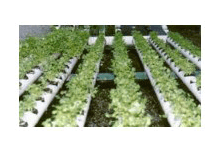EXTEND THE LIFE OF YOUR INSTALLATION
The Marbroer ESCOBER dripper has been developed to compete with the best pressure compensating and non-leakage drippers on the international market.
The non-leakage model works for optimal irrigation conditions and closes efficiently at 3 m.c.a. pressure. This explains the higher opening pressure in comparison to other transmitters, however in Marbroer we consider this characteristic necessary in order to obtain maximum benefit from the dripper, in both the medium term and long term.

In Marbroer, we suggest a 1,5 Kg/cm2 entry pressure for each transmitter. This ensures correct opening and uniformity in the desired flow, as well as avoiding the possibility of the particle deposits that are not flushed away at lower pressures.
The main duty of the installer in optimising the functioning of the dripper-system and guaranteeing proper usage of these kinds of facilities, is to advise the farmer about preventive and/or corrective measures that are summarised below, as well as to provide the aforementioned pressure.
PREVENTIVE AND CORRECTIVE ACTION
1. Provide 1,5 Kg/cm2 minimum pressure at the end of branch lines.
2. Use a filter of a minimum of 150 mesh.
3. Chemical blockages:

Prevention: at the end of the day apply, the necessary amount of acid needed to reduce the pH from 6 to 6,5 (if the crop allows it) leaving it until it reaches the furthest transmitters, increase the time estimated from 50 to 100%, to make sure. This ensures that the water retained in the drippers and in the pipes from one day to the next is always at the proper pH so avoiding the formation of precipitates.
Cleaning (without crops): Between one crop and the next, a concentration of nitric acid higher than 1% should be applied for 10 minutes, timed from the moment that the acid reaches the last transmitter in the furthest branch line. Then the tap should be closed to let the acid work for 6 hours, after which time the pipes must be flushed out for a few minutes with water only, at maximum pressure.
4. Biological blockages:
- Reservois: If it is an open-air reservoir (i.e. not protected from the sun), the following amounts of copper sulphate, potassium permanganate or sodium hypo-chlorine shown in the table are added. Preventive treatment with algaecide has to be done every time the water is renewed, and at least once a week in summer and once a month in winter.


